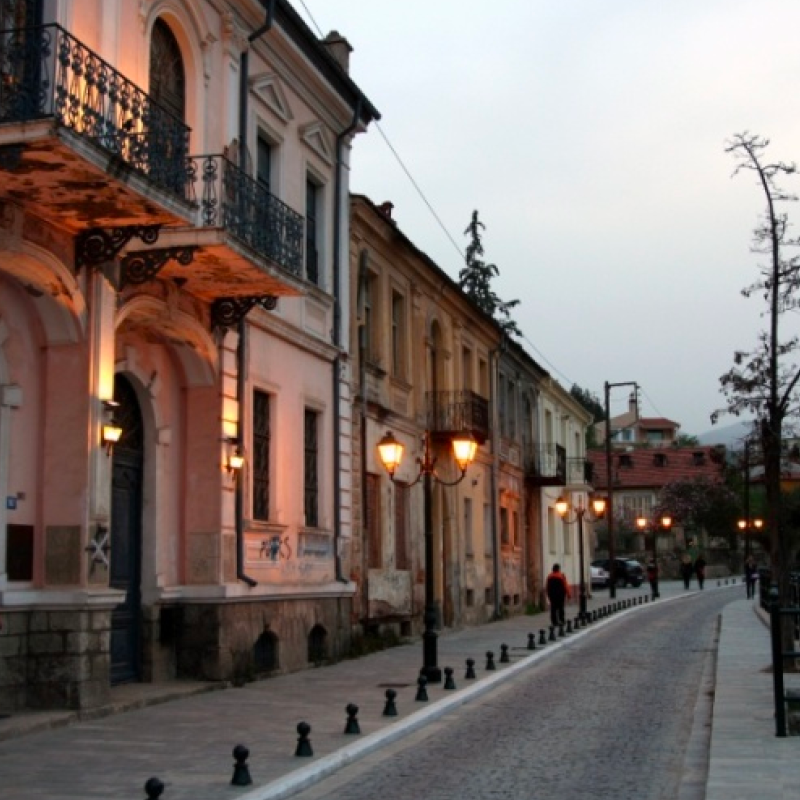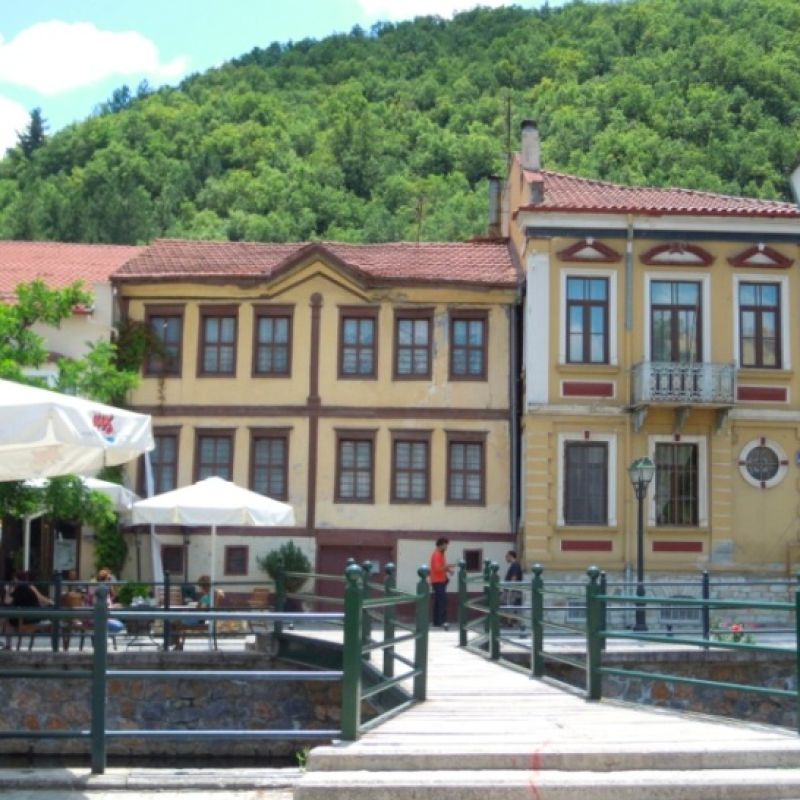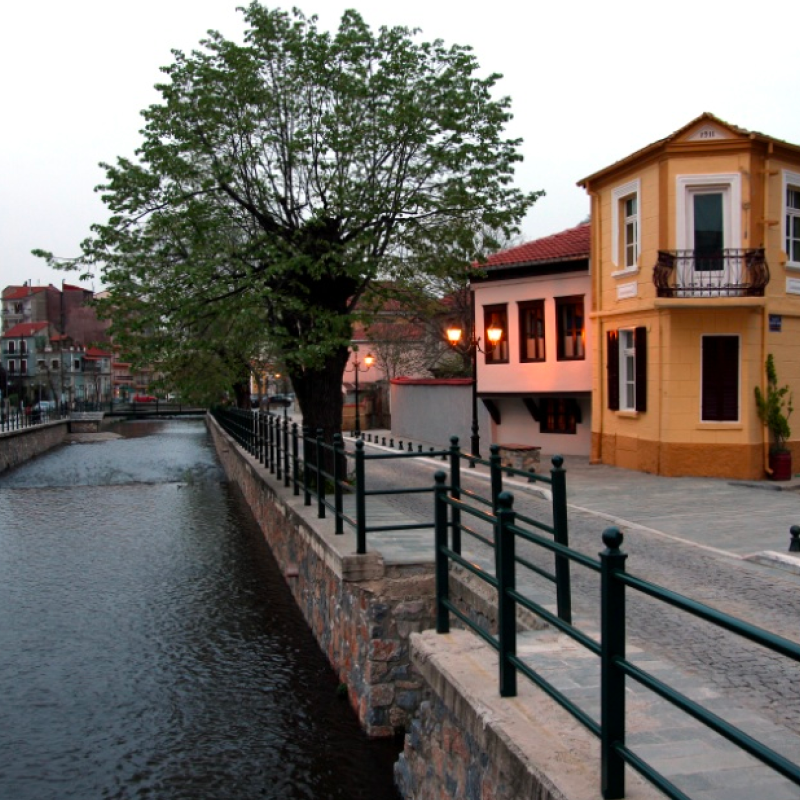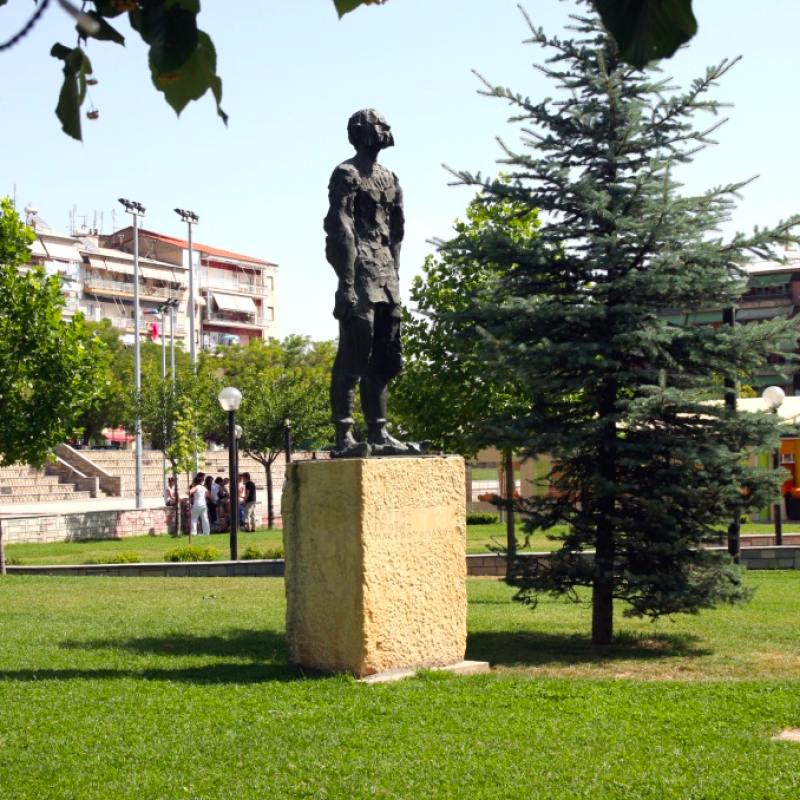Have you ever heard of Florina? Florina is a prefecture of Greece that borders with the state of North Macedonia and Albania. Come and discover more about its unspoiled natural beauty, its breathtaking landscapes and its culture.

PRESPES
Small Prespa
Saint Achillios Basilica
On the northeast bank of the homonymous islet in Small Prespa. A three-aisled basilica of impressive dimensions, built between 986 and 990 by Samuel, Tsar of Bulgarians, in order to house the relics of Saint Achillios.
Info
Agios Achillios 530 77, Grecia
Panaghia Porphyra Monastery
On the southeast end of Saint Achillios islet. The katholikon has been restored. It is a small oneaisled church with a wooden roof and a posterior narthex. The frescoes preservedare dated in 1524 and 1741. The restoration of the rest of the monastic buildings which were destroyed by shellfire in 1941 is currently being planned.
Info
Agios Achillios 530 77, Grecia
Holy Church of Saint Nicholas in the local community of Pyle
On the northwest bank of Small Prespa. It is a small triconch, domed church dated in the late 13th century. The monument is meticulously constructed with rich ceramoplastic ornamentation up to its imposing dome; the latter was probably destroyed during the Italian occupation.
Info
Πλατύ 530 77, Grecia
Holy Church of Saint Anna in Leukona
On the northeast bank of Small Prespa. A triconch, domed church of the late 10th- early 11th century. The monument preserves parts of byzantine frescoes that can be dated in the 11th century.
Info
Prespes 530 77, Grecia
Saint German
Holy Church of Saint German
Holy Church of Saint German in the homonymous community. It was founded in the beginning of the 11th century and dedicated to Germanus I, Patriarch of Constantinople, who was declared as saint. It is a cross-in-square church, fully decorated with frescoes that date back to 1743, although fragments of earlier, byzantine murals are also preserved.
Byzantine Collection of Saint German
It is housed in a traditional two- storey restored building of 1913. At present, it functions as a center of information providing media concerning the monuments of Prespes, however an exhibition of local antiquities is currently being planned.
Info
Agios Germanos 530 77, Grecia
Watermill of Saint German
The traditional watermill of Saint German is the only one fully restored of the 20 examples testified in Prespes. It is a ground storey stone building with a wooden roof, which was built in 1930 as acomplex of three uses: the watermill (for the milling of grain), the water jet (for the washing of textiles) and the fulling mill (for the pounding of textiles).
Info
Agios Germanos 531 50, Grecia
Great Prespa
Hermitage of the Metamorphosis
A small one-aisled church with few fragments of frescoes, probably dating back to the 13thcentury, is preserved inside the cavern on the southwest bank of the lake.
Hermitage of Mikri Analipsi
The Kyriakon of the hermitage is a small single-aisled church, perched on the rock. It preserves 15th century frescoes, mainly in its sanctuary.
Hermitage of Panagia Eleousa
The small Kyriakon is found on the upper part of an impressive cavern. It is a single-aisled church, externally decorated with frescoes that imitate ceramoplastic decoration. On the lunette of the west entrancethere is an icon of the Virgin in the type of Glykophilousa holding infant Jesus with her right hand. The church’s inner surfaces are fully covered with murals that date back to 1409-1410. Remnants of the hermits’ dwellings are to be seen in cavities of the rock.
Hermitage of Saint Athanasios
It is the only hermitage that may be approached directly from the community of Psarades. The small single- aisled church is dated in the first half of the 15th century and has been severely ruined by rock falls.
Info
Psarades 530 77, Grecia
Cave Paintings
The fresco icons preserved on the rock surfaces of the southwest bank of Great Prespa,should also be considered as remnants of hermitages and correlated to the inner decoration of their Kyriaka. An icon of Virgin Vlachernitissa in a shallow nichechiseled on the rock preserves an inscription of 1455. Another fresco of Virgin Eleousa or Glykophilousaholding infant Jesus with her right hand is dated in 1373 by an inscription; it belongs to the church of a hermitage inside the cave. These icons can be seen by boat travelers.
Info
Psarades 530 77, Grecia
AMYNTAIO
Kale Fortress
In the fortified site of “Kale”, situated on the north bank of Petres’ lake, there are remnants of a 10thcentury castlecovering an area of 5 acres. The castle follows a tripartite internal division, with an inner wall and a peculiar ending to the bank of the lake. On the upper part of the citadel, one can see the ruins of a basilica along with relics of scattered buildings defining the form of habitation.
Hellenistic-Roman City Of Petres
This is an enhanced and visitable site of an organized, fortified and densely populated city which belonged to the ancient kingdom of Eordaia and was probably founded by Philipp II. The first settlement upon the hill dates back to the Iron Age. The next phase is dated in the classical period, while the human presence continues seamlessly from the 4th to the 1st century B.C. The city reaches the peak of its prosperity right after 150 A.D. due to the passage of Via Egnatia through the area.
Traditional Village Of Nymfaio
The old Nikeios School built in 1928 and the traditional mansions are masterpieces of the local architecture. Nymfaio is among the 10 most beautiful villages in Europe according to UNESCO.
Lakes Vegoritida, Zazari And Chimaditida
Lakes Vegoritida, Zazari And Chimaditida, with their numerous rare species, such as pelicans and ducks.
Wineries
Viticulture and wine production characterize thw area of Amyntao, you can visit select wineries and taste the special, indigenous Xinomavro variety.12 wineries are located at this area, the oldest among them is the Association of Agricultural Cooperatives. The Alhpa Estate, the Dimopoulos estate, the Vegoritiss Winery, the kir Yannis Boutaris estate, etc.
CITY OF FLORINA

Hellenistic- City Of Florina

Traditional/Historical City Centre Of Florina

Traditional/Historical City Centre Of Florina

Traditional/Historical City Centre Of Florina

Art/Paintings And Sculptures Of Florina
How you can reach the regional unit of Florina
By airplane
Airport Macedonia, Thessaloniki, 160 km distance from Florina
By train
Thessaloniki – Florina, about 200 km distance, 3 hours
By bus
From Thessaloniki, about 150 km, 2, 5 hours













